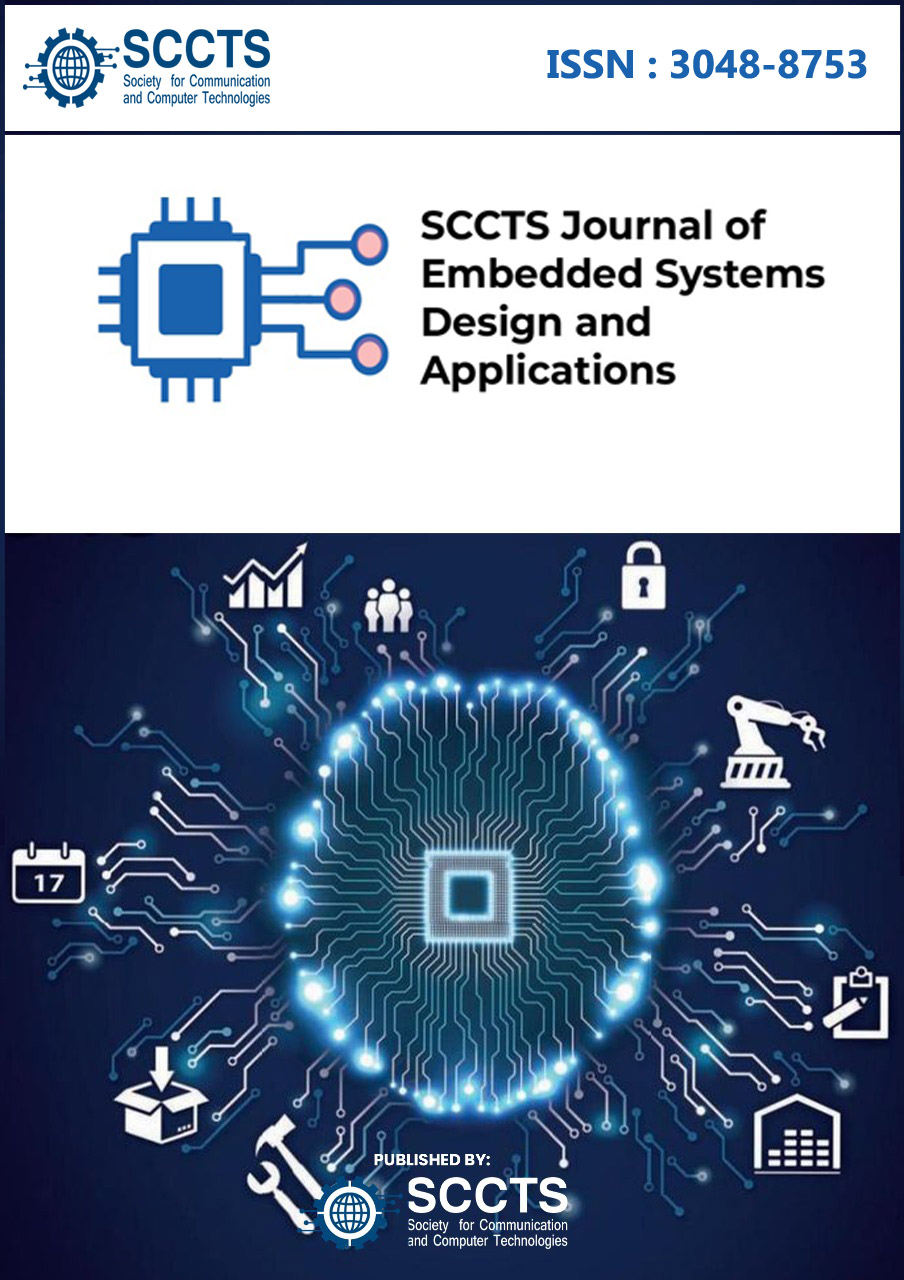Design and Evaluation of Lightweight Cryptographic Primitives for Secure Communication in Resource-Constrained LPWAN Devices
DOI:
https://doi.org/10.31838/ESA/03.02.02Keywords:
Lightweight Cryptography, Low-Power Wide-Area Networks (LPWAN), Secure Embedded Communication, Resource-Constrained IoT Devices, LoRaWAN Security, PRESENT Cipher, SPONGENT Hash Function, Energy-Efficient Encryption, STM32L0 / nRF52840 Microcontrollers, Authentication in LPWAN, Cryptographic Primitives Benchmarking, IoT Security, Hardware-Aware Cryptography, Secure MAC for Constrained Devices, Post-Quantum Ready Lightweight Ciphers.Abstract
The fast growth of Low-Power Wide-Area Networks (LPWANs) within the scope of Internet of Things (IoT) brought up the urgent questions of secure communications in highly resource-limited settings. As a robust AES and RSA conventional cryptographic scheme, it applied a heavy burden to the embedded LPWAN nodes with limited memory capacity, computing ability, and power supplies. With this in mind, to fill this gap we suggest a set of lightweight cryptographic primitives that can be utilized in secure communication in LPWAN protocols including LoRaWAN and NB-IoT. The suite contains optimized versions of block ciphers (e.g. PRESENT, Speck), stream ciphers (e.g. Trivium), and hash functions (e.g. PHOTON, SPONGENT), benchmarked on microcontrollers with ultra-low power including STM32L0 and nRF52840. Security tests are done on differential, linear, and replay attacks and the performance tests on flash/RAM usage, latency, and energy consumption. Findings show that the PRESENT cipher implemented together with the SPONGENT hash-function decreases the memory demand by 52 percent, and energy utilization by 37 percent as contrasted to AES-CCM, with no foundational security promises damaged. These results highlight the ability to implement lightweight cryptography in the IoT system based on the LPWAN and maintain the data confidentiality, integrity, and authentication and at the same time support the efficiency of the devices. The work gives a scalable basis of secure embedded communication especially in areas like smart metering, environmental monitoring, industrials telemetry.





